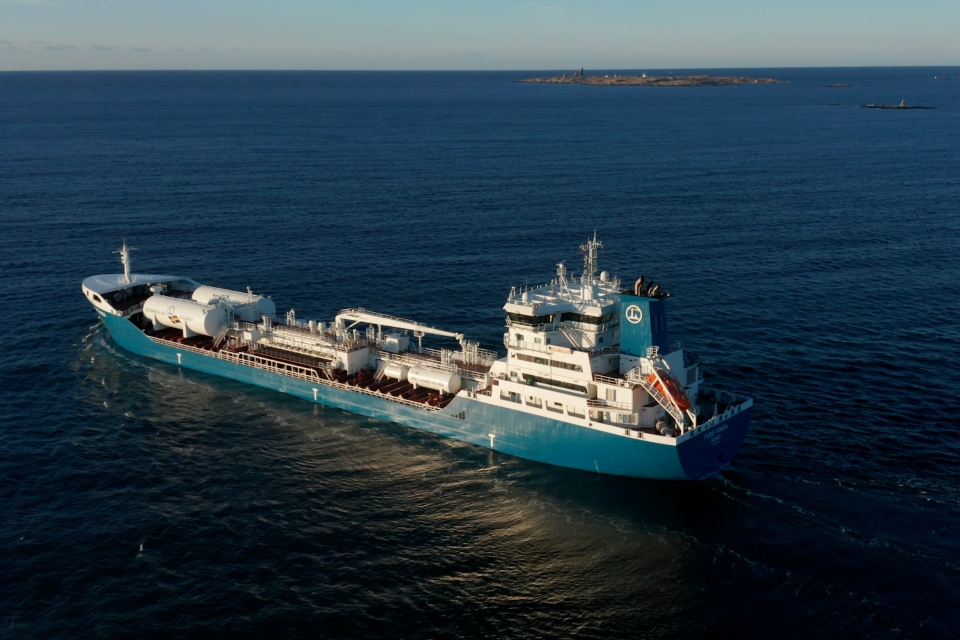Reducing methane slip is a vital challenge in taking LNG-fuelled ships towards zero greenhouse gas emissions. Now Wärtsilä and Furetank are co-developing and testing two technologies showing the potential to halve the methane slip.
Running vessels on LNG/LBG brings many benefits compared to conventional fuel oil, reducing emissions of CO2, NOx, SOx and harmful particles. But a much debated downside is the methane slip: the release of unburned gas fuel, not fully combusted in the engines.
Although the combustion rate is generally high and the methane slip accounts for a very small fraction of the fuel used, methane is a more potent greenhouse gas than CO2. Thus, this slip is the most critical technical challenge to overcome in gas-fuelled vessels; a challenge which Finnish engine builder Wärtsilä and Swedish shipping company Furetank are now countering.
Also read: Wärtsilä Ammonia Release Mitigation System receives AiP from DNV
Two innovative technologies
Two technical solutions have been tested in Furetank’s Vinga series tankers. One of them is a Greenhouse Gas (GHG) reduction package, developed by Wärtsilä for dual-fuel engines. The GHG package actively controls the engine while working in demanding conditions like manoeuvring, harsh sea conditions or varying fuel quality. This way, combustion is optimised and unburned gas emissions minimised.
The other solution is the Low Load Optimisation package, reducing methane slip at low engine loads, for example during harbour operations like loading and unloading. This package actively balances the loading of each engine cylinder, optimising the overall total engine efficiency even at a low engine load.
Also read: Another seven companies join initiative to tackle methane slip
Reduction reaching fifty per cent
The tests performed, both in the laboratory and at sea, show very promising results. The methane slip was reduced by 45 to fifty per cent.
‘These are great results, far exceeding what we had expected or technically believed,’ says Göran Österdahl, sales director of marine power at Wärtsilä. ‘The tests show a significant impact in absolute terms. We believe many shipping companies will be interested in these solutions. And this is not the end of the road, there is more to be done.’
Critical time for future fuels
The functionality will be implemented in the Vinga sister vessels currently being built at the China Merchants Jinling Shipyard in Yangzhou, and retrofitted into all earlier ships in the series.
Österdahl: ‘This is a very successful collaboration, as Furetank has asked us for solutions and offered to perform tests in real-life conditions. We are in a phase of intense research and development on future fuels, making it invaluable for us to find test-willing partners. Our entire industry will need to establish many operator/product developer collaborations. Otherwise progress will be too slow.’
Picture: Fure Vinga.
Also read: EU funding for Green Ray project to tackle methane slip








